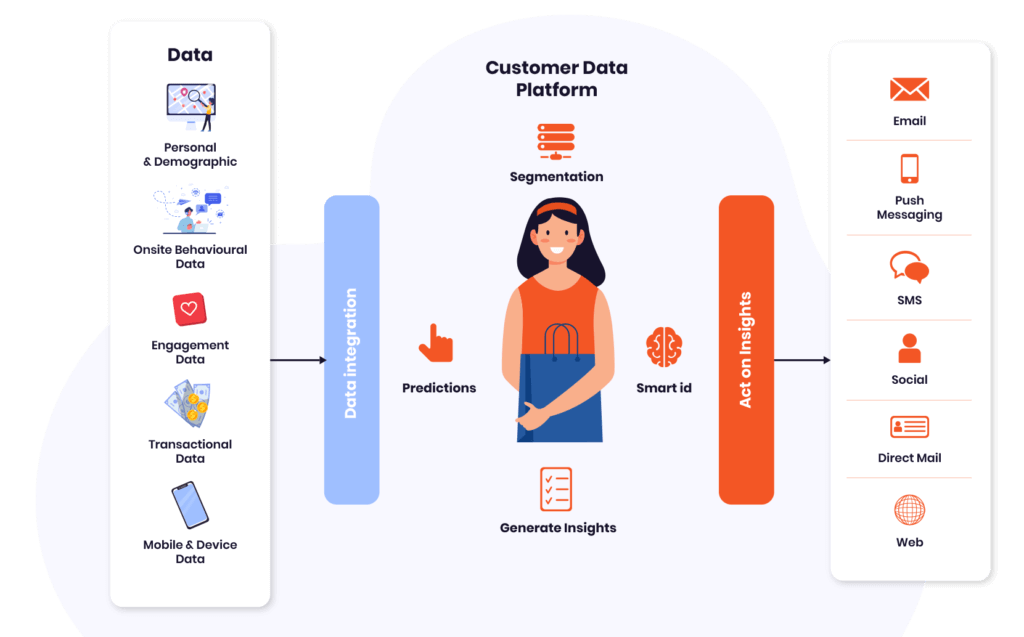What Is Customer Insight? 5 Essential Steps to Identify Customer Insight in E-commerce
Customer Insight in E-commerce: The “Golden Key” to Unlock Growth
In today’s digital landscape, e-commerce has become a highly competitive and dynamic playing field. To survive and thrive, businesses need more than just great products and effective marketing strategies — they must understand the very heart of their operations: customer insight in e-commerce. But what exactly is customer insight, and how can it be effectively utilized in the digital marketplace?
What Is Customer Insight in E-commerce?

Customer insight in e-commerce refers to the deep understanding of a customer’s psychology, behavior, motivations, and unmet needs — elements that are often not visible through surface-level data. These are the inner thoughts and emotions that influence buying behavior, even if customers don’t explicitly say them.
For instance, a buyer may not say, “I want to feel more confident,” but their decision to buy luxury sneakers could be rooted in a desire for social approval and self-assurance. This is the kind of underlying truth that defines a valuable customer insight in e-commerce.
Why Customer Insight Matters in E-commerce
In an online shopping environment where face-to-face interaction is absent, customer insight in e-commerce plays a vital role in:
-
Enhancing the user experience across websites and mobile apps
-
Creating highly personalized advertising and content
-
Designing products and services that address hidden customer needs
-
Boosting conversion rates and building long-term customer loyalty
The ability to uncover and act on customer insight in e-commerce is what separates thriving brands from the rest.
5 Steps to Discover Powerful Customer Insight in E-commerce
Step 1: Collect Multi-Dimensional Data
The journey to strong customer insight in e-commerce begins with data. To understand your audience fully, gather insights from multiple channels:
-
Website behavior: time spent, scroll depth, bounce rates, product views, cart abandonment
-
Transaction data: purchase frequency, average order value, favorite products, payment preferences
-
Customer interactions: reviews, chat transcripts, feedback forms, social media engagements
-
Demographics and psychographics: collected through surveys, sign-up forms, or tools like Google Analytics
-
Competitor data: look at how your competitors interact with their audience and how customers respond
-
Social listening: track conversations related to your brand, industry, and competitors to identify unmet needs or frustrations
This data is the foundation for revealing patterns and triggers behind customer actions.

Step 2: Analyze and Segment the Data
Once data is collected, analyze it for actionable customer insight in e-commerce:
-
Use analytics platforms like Google Analytics, Shopify Analytics, or social media tracking tools
-
Segment users into different personas based on shared traits like behaviors, interests, or demographics
-
Identify friction points in the buying journey — high drop-off pages or complex checkout processes
-
Combine numbers with narratives: balance statistical findings with emotional cues from customer reviews
By segmenting and understanding micro-patterns, businesses can target users more effectively and align with their expectations.
Step 3: Decode the “Why” Behind Behavior
Surface-level observations don’t create strong insights. To master customer insight in e-commerce, dig into the reasons behind every user action.
-
Why are carts being abandoned? Is it high shipping costs, slow page load time, or checkout friction?
-
Why does one product get consistent poor reviews? Is there a gap between product description and reality?
-
Why do customers buy certain products together? Could they serve a complementary function or appeal to a niche interest group?
Understanding customer insight in e-commerce means reading between the lines and thinking like your customer.
Step 4: Build Hypotheses Based on Customer Insight
After deep analysis, it’s time to create hypotheses grounded in customer insight in e-commerce:
-
Develop clear customer personas with details like age, location, goals, challenges, and emotional triggers
-
Identify their shopping mindset: Are they bargain-hunters, trend-followers, or emotional buyers?
-
Define their fears and expectations during the buying process
These profiles will guide your product development, content strategy, and marketing tone.
Step 5: Validate and Implement Customer Insights
A strong customer insight in e-commerce must be tested in the real world. Use a combination of A/B testing, feedback loops, and performance metrics:
-
A/B test landing pages, product descriptions, or ad creatives based on insight-driven hypotheses
-
Gather customer feedback through quick polls or follow-up emails
-
Measure KPIs like conversion rate, retention rate, and customer satisfaction scores
Once validated, use your customer insight in e-commerce to optimize every area of your business:
-
Product Development: create offerings that align with customers’ deeper desires
-
Marketing Campaigns: write compelling copy that reflects your customers’ motivations
-
User Experience: personalize homepage content, product recommendations, and promotional emails
-
Customer Support: address problems with empathy and insight
-
Sales Funnel Optimization: remove blockers and make the buying process seamless

Final Thoughts: Customer Insight in E-commerce as Your Business Compass
In the vast and competitive digital marketplace, customer insight in e-commerce is not just a strategy — it’s your compass. It helps you connect with your audience on a human level, build lasting loyalty, and continuously improve your business offerings.
Start leveraging customer insight in e-commerce today, and you’ll unlock growth opportunities you never knew existed.
Additionally, Hac Ecommerce offers a range of comprehensive services designed to support and empower businesses operating in the POD (Print on Demand) industry. These services include fulfillment solutions, payment account rentals, and design cloning, all of which are tailored to meet the unique needs of entrepreneurs in this niche.
Hac E-commerce wishes you success in building a customer-centric, insight-driven e-commerce brand.


